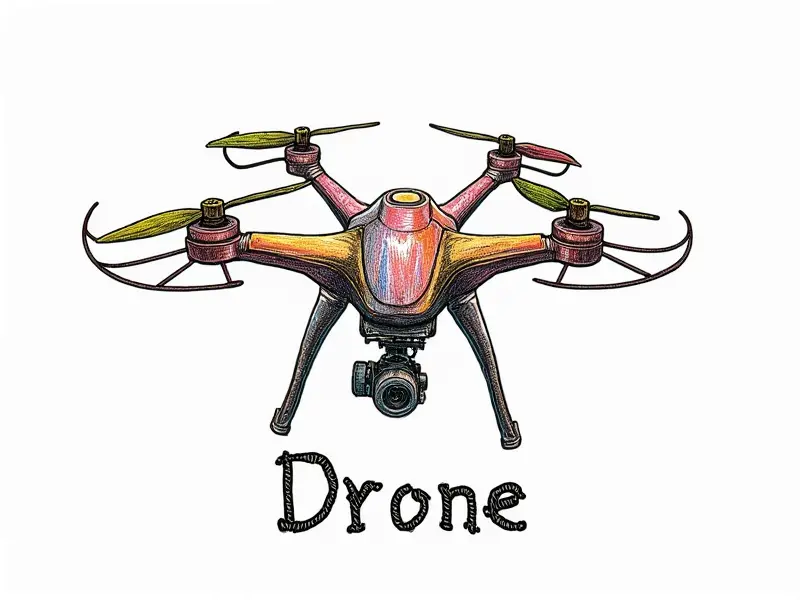Hubsan drone crashes?

Best Practices for Flying Hubsan Drones Safely
Flying a Hubsan drone safely is crucial to ensure you enjoy your aerial adventures without the risk of crashes. Here are some best practices:
- Check Weather Conditions: Always fly in calm weather conditions, avoiding strong winds or heavy rain.
- Pre-flight Inspection: Before each flight, inspect your drone for any signs of damage or loose parts. Check the propellers and battery connections.
- Familiarize with Controls: Spend time getting comfortable with your controller's settings and controls to avoid accidental crashes due to unfamiliarity.
- Flight Area: Choose an open area free from obstacles, people, or pets. Avoid flying near power lines or buildings.
Understanding Hubsan Drone Crash Patterns
Crashes can happen for various reasons, but understanding the common patterns can help you prevent them:
- Battery Issues: Low battery levels often lead to sudden crashes as the drone loses power.
- Lack of Control: Losing control due to poor signal or unfamiliarity with controls can result in unintended movements and crashes.
- Environmental Factors: Flying in windy conditions, near obstacles, or over uneven terrain increases crash risk.
Tips to Extend Hubsan Drone Flight Time
To get the most out of your Hubsan drone's battery life and avoid crashes due to low power, follow these tips:
- Use High-Quality Batteries: Invest in reputable batteries that offer consistent performance.
- Avoid Overheating: Keep the drone away from direct sunlight during charging or flying to prevent battery overheating.
- Fly Efficiently: Plan your flight routes efficiently, avoiding unnecessary maneuvers that drain power faster.
Troubleshooting Guide for Hubsan Drone Crashes
If you experience crashes with your Hubsan drone, here are some troubleshooting steps:
- Check Connections: Ensure all components are securely connected before each flight.
- Battery Health: Test the battery's voltage and capacity. Replace batteries if they show signs of degradation.
- Signal Interference: Check for any sources of signal interference, such as other electronic devices or metal objects nearby.
Maximizing Hubsan Drone Battery Life to Avoid Crashes
Adequate battery management is key to preventing crashes due to power loss. Here’s how:
- Monitor Voltage Levels: Use a voltage checker app or monitor the drone's telemetry data.
- Charge Properly: Charge batteries fully and avoid partial charges which can degrade battery life.
- Flight Planning: Plan your flight to ensure you return home before reaching critical low-battery levels.
Safety Measures for Flying Hubsan Drones
To fly safely, implement these measures:
- Wear Protective Gear: Use gloves and protective eyewear to safeguard yourself during flights.
- Follow Regulations: Adhere to local laws and regulations regarding drone flying, such as no-fly zones or altitude limits.
- Emergency Procedures: Have a plan for emergency landings in case of sudden issues like signal loss or battery failure.
Safeguarding Your Hubsan Drone from Damage
To protect your drone from damage during crashes, consider these tips:
- Use Protective Cases: Store and transport the drone in a protective case to prevent accidental bumps or drops.
- Propeller Guards: Install propeller guards to reduce damage if your drone hits an obstacle.
- Foldable Design: Utilize the foldable design of Hubsan drones for easier handling and storage, reducing accidental damage.
Understanding the Safety Features of Hubsan Drones
Hubsan drones come with built-in safety features designed to prevent crashes. Here’s what you need to know:
- Battery Low Warning: The drone alerts you when battery levels are critically low.
- Return-to-Home Function: This feature allows the drone to automatically return home if signal is lost or power runs out.
- Obstacle Avoidance: Some models have sensors that detect obstacles and adjust flight paths accordingly.
Fixing Issues Before Your Hubsan Drone Crashes
To avoid crashes, address potential issues proactively:
- Maintain Firmware Updates: Keep your drone’s firmware up-to-date to benefit from the latest safety features.
- Regular Maintenance: Clean and inspect components regularly for any signs of wear or damage.
- Battery Testing: Periodically test batteries for capacity and voltage levels to ensure optimal performance.
Troubleshooting Hubsan Drone Connectivity Issues
Connectivity problems can lead to crashes. Here’s how to troubleshoot them:
- Signal Strength: Check the signal strength between your controller and drone. Weak signals can cause erratic behavior.
- Interference Sources: Identify any potential sources of interference, such as Wi-Fi networks or other electronic devices.
- Controller Settings: Ensure that your controller's settings match those recommended by the manufacturer for optimal performance.
Avoiding Common Mistakes in Hubsan Flying
To avoid common mistakes, follow these guidelines:
- Flight Experience: Gain experience flying smaller drones before moving to more advanced models like the Hubsan.
- Weather Conditions: Avoid flying in harsh weather conditions such as heavy rain or strong winds which can destabilize the drone.
- Overconfidence: Don’t assume you know everything about your drone. Always refer to the manual and seek advice from experienced users if needed.
Conclusion
Flying a Hubsan drone safely requires attention to detail, regular maintenance, and adherence to safety guidelines. By following these tips, you can enjoy flying your drone without risking damage or injury.
If you have any specific questions or need further assistance with troubleshooting issues, feel free to reach out for more detailed guidance.
Happy Flying!

